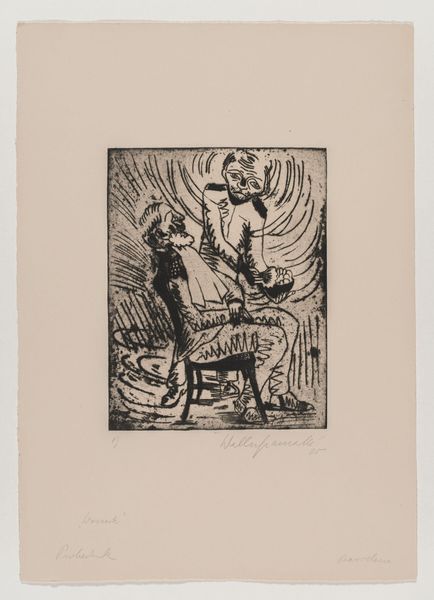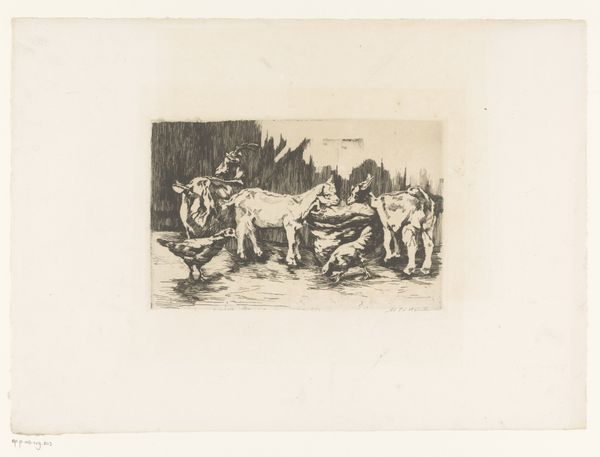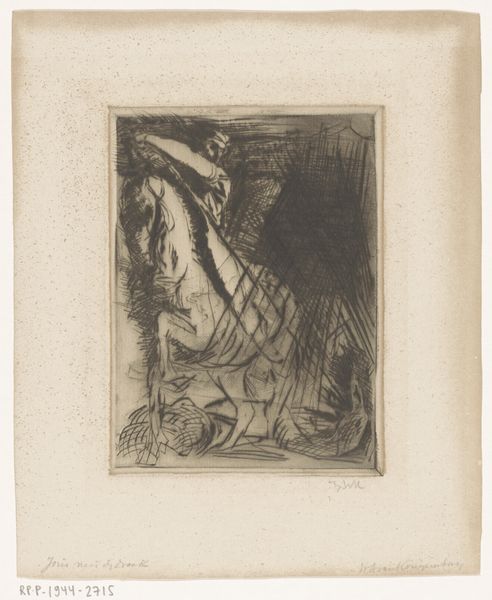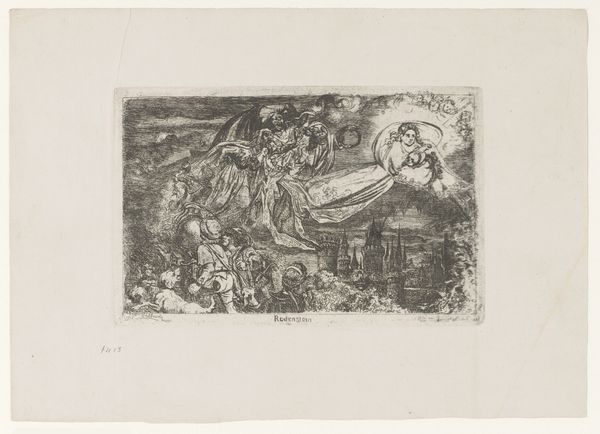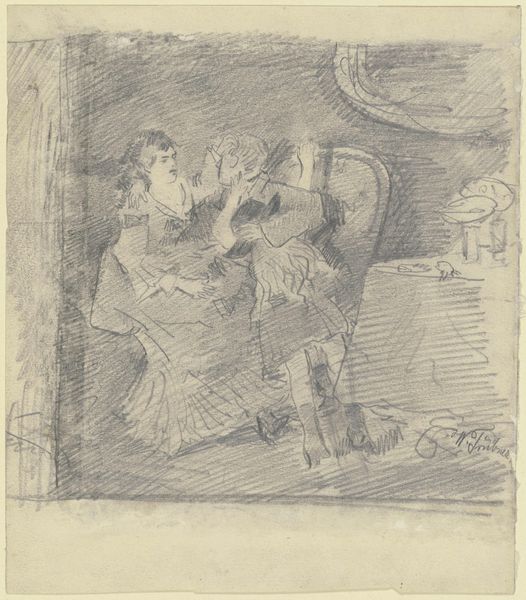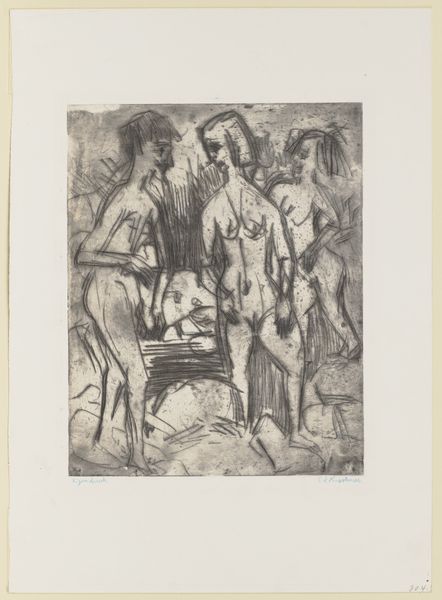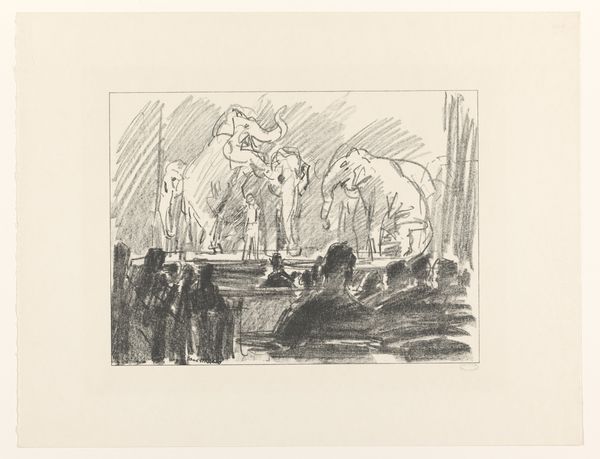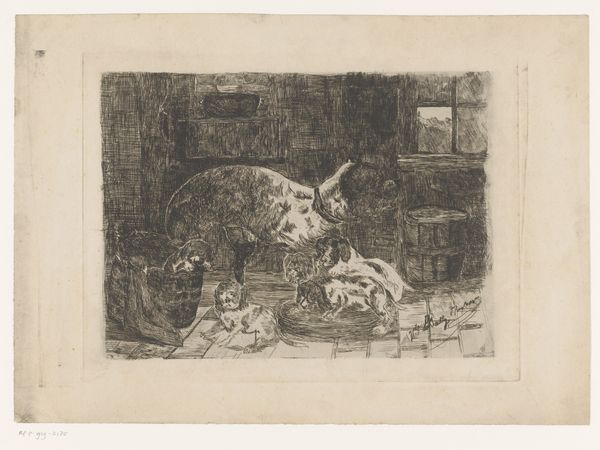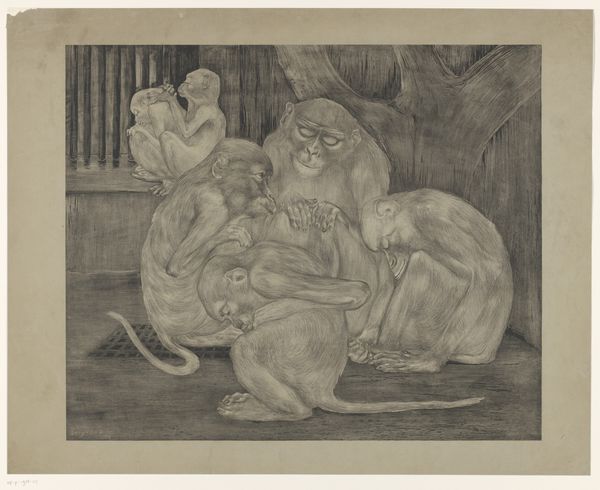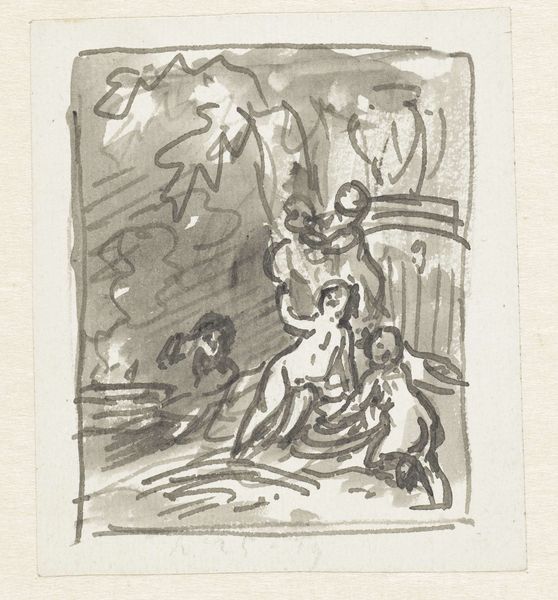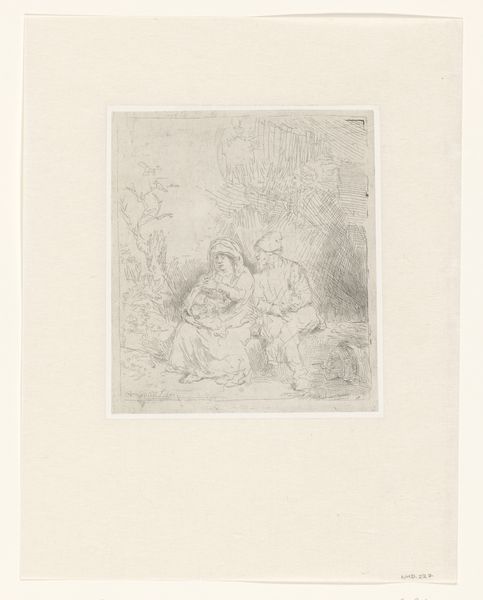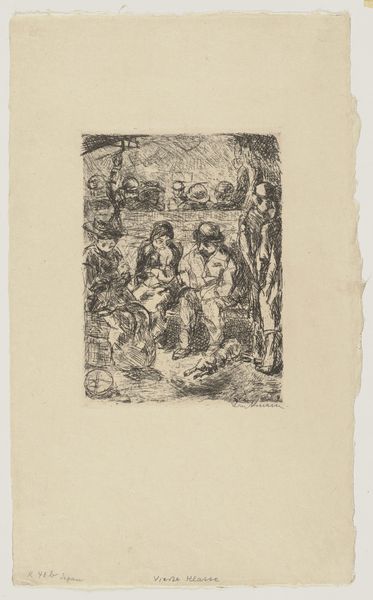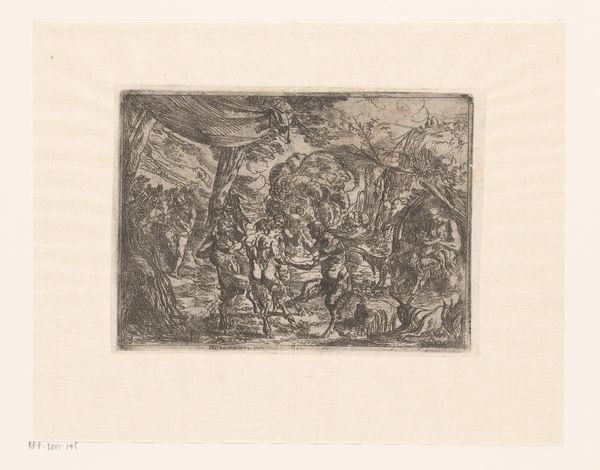
Die Erscheinung der SiebenNach Charles De Costers „Tyll Ulenspiegel“ 1923
0:00
0:00
drawing, print, ink
#
drawing
# print
#
figuration
#
ink
#
expressionism
#
history-painting
#
nude
Copyright: Public Domain
Editor: This is "Die Erscheinung der Sieben—Nach Charles De Costers 'Tyll Ulenspiegel,'" a 1923 ink and print by Ernst Ludwig Kirchner. The jagged lines and crowded figures create such a disturbed feeling, almost nightmarish. What stands out to you most? Curator: The image immediately evokes a sense of cultural memory. Note how Kirchner presents the seven figures, bathed in stark light and shadow; the references aren't explicitly Christian, but they echo iconography— perhaps of the seven deadly sins, or a distorted annunciation. Consider the historical context: The expressionistic style serves to symbolize inner turmoil mirroring post-World War I anxieties and disillusionment in Germany. Editor: That makes sense, given the intensity. The faces seem mask-like, and the nudity feels vulnerable, yet also defiant. Is that a commentary, do you think, on the role of the body in times of trauma? Curator: Precisely! Kirchner uses the body as a vessel for psychological projection. Notice how the figures lack distinct features. They become symbolic representations of human emotions and existential concerns rather than individualized portraits. Can you see any recurring symbols that contribute to this effect? Editor: The recurring vertical lines in the background—they almost cage the figures. And the central figure holding something… is that a child? The overall impression is that of a ritual or an unveiling of some forbidden knowledge. Curator: Good observation! It speaks to the ways in which cultural narratives – even distorted or fragmented ones – continue to shape our collective consciousness. Understanding how Kirchner employs symbols allows us to tap into those underlying anxieties and desires. Editor: I never considered that Expressionism could be so deeply rooted in symbolic traditions. This was a very insightful discussion, thank you! Curator: And thank you! Looking closely at such potent imagery provides a bridge across history, allowing us to engage with fundamental questions about our human condition.
Comments
No comments
Be the first to comment and join the conversation on the ultimate creative platform.

